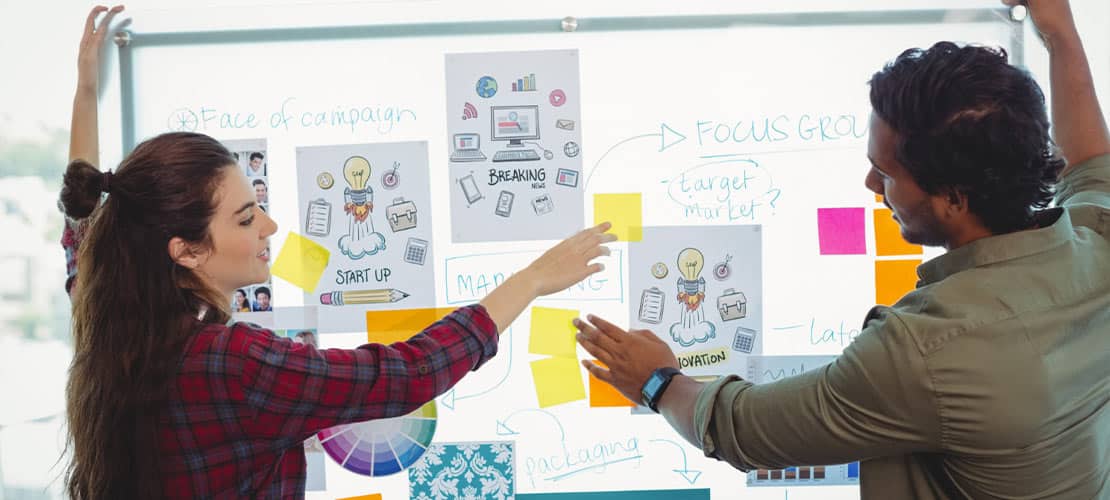Why Is Visual Communication Important

When you think of communication, your mind usually turns to the idea of talking to someone. A conversation is an effective way to communicate with an audience – which can consist of customers or even staff members.
Visual communication, however, is often an overlooked tool that can significantly improve your efforts. Let’s explore the power and potential of effective visual communication in this post. We’ll examine what visual communication entails, its benefits, and how to implement it in your workspace.
What Is Visual Communication?
There are different ways in which you can communicate with others. You can pick up the phone and converse with a client or set up a face-to-face meeting with your employees. These verbal communication methods continue to play an essential role in managing a business.
Communication doesn’t always have to be verbal. You can make your communication more attractive and interactive by including visual elements in your methods. Visual aids can also help you reach a broader audience and assert your expertise in an industry.
Visual communications do not always have to consist of only visual images. Think about videos posted on YouTube, TikTok, and other platforms. These are also examples of communication that take advantage of visuals to talk to an audience. It’s a mixed media method combining visuals and verbal communication to connect to people.
Research shows that marketers prefer to use visual communication more than 80% of the time in today’s world.
In one survey, researchers asked marketers about the type of visual communication they use most often. The results were as follows:
- 36.4% use original graphics
- 33.6% use stock photos
- 13.1% use presentations and video content
- 6.5% use data visualization and charts
- 5.7% rely on GIFs, as well as memes
As you can see, several ways to communicate visually with an audience exist.
What Benefits Does Visual Communication Offer?

You can expect several possible benefits if you use visual content more often in your marketing campaigns. Not only can you turn to communicate visually for marketing purposes, but graphic design and other visual content can help with internal affairs too.
One example is to use gamification to promote better engagement among your employees. This can help your employees communicate effectively with each other and even cultivate some friendly competition – which could allow you to see a significant boost in performance.
When you use visual communication effectively, you can see more leads through your funnel and marketing efforts. Converting those leads to paying customers using visual content is much easier.
One report examined the difference between people shown text and illustrations and those only shown text. Those who had illustrations alongside the text to help guide them did 323% better compared to the people who only had written content to guide them.
Good visual communication helps to make an impression at an early stage. As you know, impressions last – so asserting your expertise in an industry is essential. Visual information helps make this process easier. You can also use visual content to convey messages that would take up too much text – as people get distracted quickly.
How To Implement Visual Communication
The first step to implementing effective communication using visuals is to plan ahead. You need to know how visual communication helps different parts of your business.
Understand whether you want to use it for internal factors or externally to talk to your target audience.
You also need to understand what type of visual content you want to use in the communication process. To build brand awareness with visual content, you can use images, illustrations, infographics, charts, videos, GIFs, and other media formats.
Finding The Right Tools
One of the most important things you should remember is the tools you will use. When creating content, you need compelling visuals to give your campaigns more meaning. You also need to consider the text that you use, as this could create language barriers.
One option is to hire graphic designers. This has been the standard way of incorporating visuals into a marketing campaign for a long time.
Unfortunately, we do not all have the funds for graphic designers, whether in-house or outsourced. You can turn to services like Fiverr to find people who can create digital content on a lower budget.
With this said, these people do not thoroughly understand your business. Thus, they may need help to communicate information in such a way to represent your brand perfectly.
Thanks to many advancements in digital technologies, there are ways to create different types of visual content with little skill. Many sole proprietors and small business owners decide to use particular tools themselves. This saves time, reduces the use of text-heavy content, and reduces the costs involved with the production of meaningful content.
Here are some tools that can help you get started:
- Canva: An online cloud-based graphic design tool that has recently gained much popularity. Canva gives you access to a wide variety of templates that you can use. Whether you want images for blog posts or visuals like pie charts, there are several categories you can choose from.
- Google Fonts: Typography is essential in catching the eye, especially since research shows customers have limited attention spans. Google Fonts gives you access to a wide variety of fonts that you can use. FontJoy is also an excellent alternative to see how words will look with different font styles.
- Gamification: Gamification takes your sales data and presents it to your team fun and engagingly. It keeps your team focused on their targets and helps leaders effectively coach their teams.
- PlaceIt: If you need to create a mockup of a product or perhaps your website, then PlaceIt is a great resource. It provides a consistent experience that is easy to navigate. You can place graphics on diverse photos, including smartphones, laptops, and more.
Using Visuals In Your Marketing Campaigns
A common challenge for business owners is finding a way to use these images in their campaigns. You may already have content that uses words instead of visuals.
Here are a few ideas and tips to help you out:
- Use existing words from posts on Facebook and other social networks to create content when you have no idea what visuals to use.
- Be consistent with branding in visual communication, as this is a compelling way to create better retention and ensure your audience easily recognizes your content. Branding should also be reflected in your web design. This also helps in creating connections between various online properties.
- Make sure you are diverse. Using pie charts, images, and visual content that draws emotions is a great example of combining various formats to create more effective campaigns.
- Don’t include similar images or visual content on the same page. For example, don’t display process diagrams with an infographic and other visuals that show the exact same thing.
- You can effectively create meaning with visuals without using a lot of written content in the process. On the other hand, you can add more value to your existing content by including some visual content.
The Bottom Line
Visual communication gives you the ability to have a conversation without using words. It’s an excellent supplement to other communication methods you use in the workplace and can be used both internally and externally. Combining visual communication with gamification can also promote participation and engagement. Spinify uses leaderboards to communicate your team’s progress excitingly and engagingly. At the same time, our automated achievements let the whole team in on the celebration.
Book a demo with Spinify today and discover how our state-of-the-art gamification solution can help you take your business to the next level.
Put those insights into practice.
Set your team up for success by improving their performance through gamification.
Back to blog







